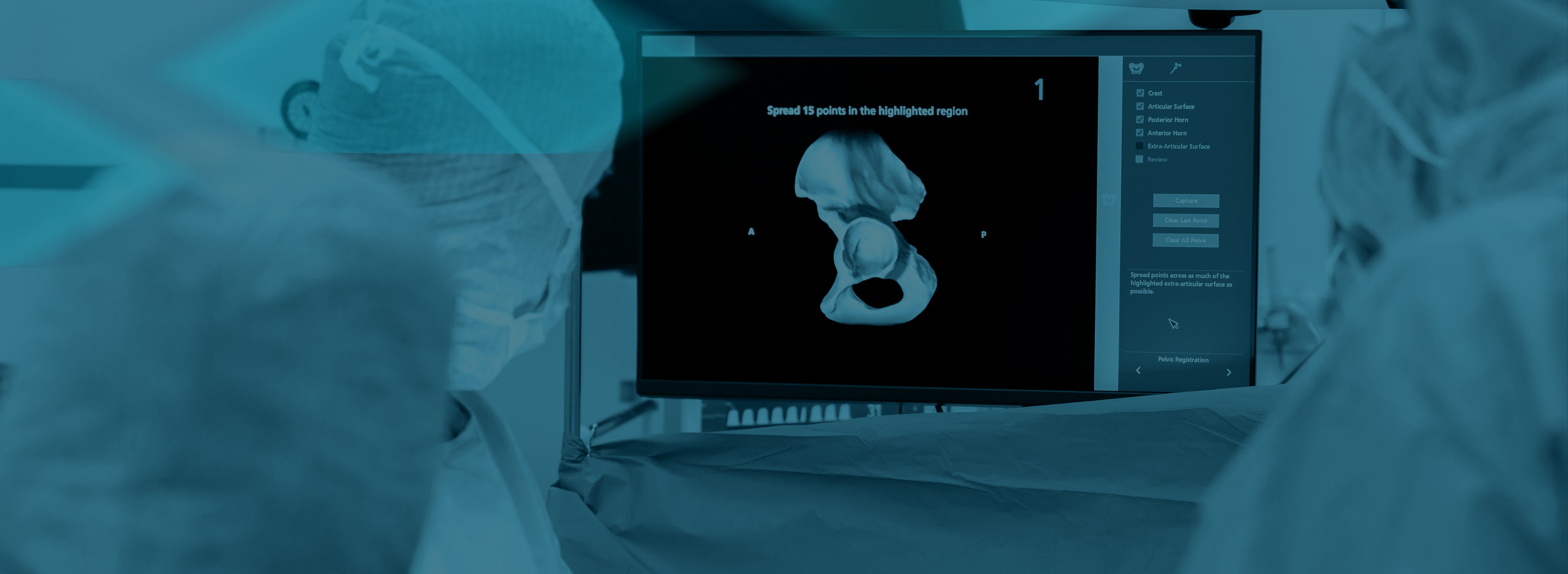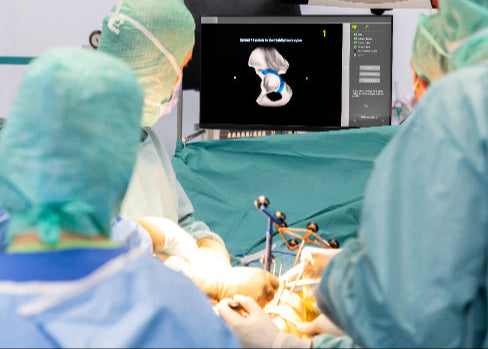
Robotic Assisted Joint Replacement
Robotics play a crucial role in modern hip and knee replacement surgeries by improving precision and enabling customised surgical planning.

-
What is Robotic-Assisted Partial or Total Knee Replacement?
Robotics for knee surgeryRobotic-assisted knee replacement is an advanced technique that enhances the precision of knee replacement surgery. While the surgeon still performs the operation, robotic technology is used as a powerful tool to guide planning and execution.
Before surgery, a detailed 3D model of your knee is created using a CT scan. This allows for accurate planning based on your individual anatomy, helping to determine the optimal position, size and orientation of the implant. During the operation, a robotic arm assists the surgeons like Mr Sisodia in preparing the bone and positioning the implants with a high level of accuracy. Real-time feedback from the robotic system helps ensure that each step is carried out exactly as planned.
This level of precision can lead to several potential benefits, including more consistent implant alignment, less soft tissue release, and improved joint stability. For patients, this may translate into a more natural-feeling knee, quicker recovery, and potentially better long-term outcomes.
Robotic-assisted surgery does not replace the skill of the surgeon—it enhances it. As a fellowship-trained knee surgeon, Mr Sisodia uses this technology where appropriate to provide highly personalised and accurate care tailored to your anatomy and lifestyle. -
What is Robotic-Assisted Total Hip Replacement?
Robotics for hip surgeryRobotic-assisted total hip replacement is an advanced technique that enhances the precision of hip replacement surgery. While the surgeon still performs the operation, robotic technology is used as a powerful tool to guide planning and execution.
Before surgery, a detailed 3D model of your hip is created using a CT scan. This allows for accurate planning based on your individual anatomy, helping to determine the optimal position and orientation of the implant. During the operation, a robotic arm assists the surgeon in preparing the bone and positioning the implant with a high level of accuracy. Real-time feedback from the robotic system helps ensure that each step is carried out exactly as planned.
This level of precision can lead to several potential benefits, including more consistent implant alignment, reduced risk of leg length differences, and improved joint stability. For patients, this may translate into a more natural-feeling hip, quicker recovery, and potentially better long-term outcomes.
Robotic-assisted surgery does not replace the skill of the surgeon—it enhances it. As a fellowship-trained hip surgeon, I use this technology where appropriate to provide highly personalised and accurate care tailored to your anatomy and lifestyle.
